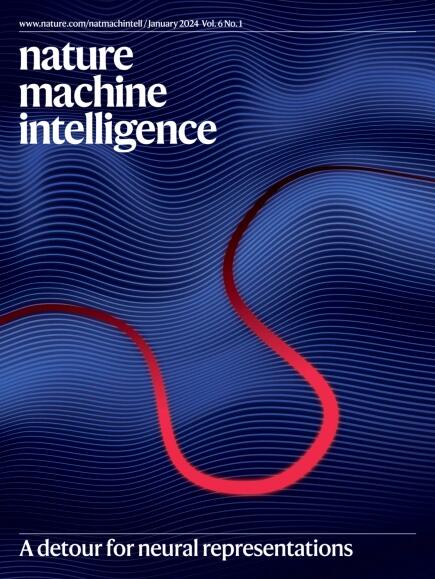End-to-end cryo-EM complex structure determination with high accuracy and ultra-fast speed
IF 23.9
1区 计算机科学
Q1 COMPUTER SCIENCE, ARTIFICIAL INTELLIGENCE
引用次数: 0
Abstract
While cryogenic-electron microscopy yields high-resolution density maps for complex structures, accurate determination of the corresponding atomic structures still necessitates significant expertise and labour-intensive manual interpretation. Recently, artificial intelligence-based methods have emerged to streamline this process; however, several challenges persist. First, existing methods typically require multi-stage training and inference, causing inefficiencies and inconsistency. Second, these approaches often encounter bias and incur substantial computational costs in aligning predicted atomic coordinates with sequence. Last, due to the limitations of available datasets, previous studies struggle to generalize effectively to complicated and unseen test data. Here, in response to these challenges, we introduce end-to-end and efficient CryoFold (E3-CryoFold), a deep learning method that enables end-to-end training and one-shot inference. E3-CryoFold uses three-dimensional and sequence transformers to extract features from density maps and sequences, using cross-attention modules to integrate the two modalities. Additionally, it uses an SE(3) graph neural network to construct atomic structures based on extracted features. E3-CryoFold incorporates a pretraining stage, during which models are trained on simulated density maps derived from Protein Data Bank structures. Empirical results demonstrate that E3-CryoFold improves the average template modelling score of the generated structures by 400% as compared to Cryo2Struct and significantly outperforms ModelAngelo, while achieving this huge improvement using merely one-thousandth of the inference time required by these methods. Thus, E3-CryoFold represents a robust, streamlined and cohesive framework for cryogenic-electron microscopy structure determination. Wang et al. present E3-CryoFold, a deep learning method for cryo-EM structure determination that enables end-to-end training and one-shot inference This method reduces inference times while boosting template modelling scores against comparable methods.


端到端低温电镜复杂结构测定,高精度,超快速度
虽然低温电子显微镜可以为复杂结构提供高分辨率的密度图,但准确确定相应的原子结构仍然需要大量的专业知识和劳动密集型的人工解释。最近,基于人工智能的方法已经出现,以简化这一过程;然而,一些挑战依然存在。首先,现有的方法通常需要多阶段的训练和推理,导致效率低下和不一致。其次,这些方法经常遇到偏差,并且在将预测的原子坐标与序列对齐时产生大量的计算成本。最后,由于可用数据集的限制,以往的研究难以有效地推广到复杂和未知的测试数据。在这里,为了应对这些挑战,我们引入了端到端高效的CryoFold (E3-CryoFold),这是一种实现端到端训练和一次推理的深度学习方法。E3-CryoFold使用三维和序列转换器从密度图和序列中提取特征,并使用交叉注意模块将两种模式整合。此外,利用SE(3)图神经网络根据提取的特征构造原子结构。E3-CryoFold包含一个预训练阶段,在此期间,模型在蛋白质数据库结构的模拟密度图上进行训练。实证结果表明,与Cryo2Struct相比,l3 - cryofold将生成结构的平均模板建模分数提高了400%,并且显著优于ModelAngelo,而实现这一巨大的改进仅使用了这些方法所需推断时间的千分之一。因此,e3 - cryfold代表了一个强大的、流线型的和内聚的框架,用于低温电子显微镜结构测定。
本文章由计算机程序翻译,如有差异,请以英文原文为准。
求助全文
约1分钟内获得全文
求助全文
来源期刊

Nature Machine Intelligence
Multiple-
CiteScore
36.90
自引率
2.10%
发文量
127
期刊介绍:
Nature Machine Intelligence is a distinguished publication that presents original research and reviews on various topics in machine learning, robotics, and AI. Our focus extends beyond these fields, exploring their profound impact on other scientific disciplines, as well as societal and industrial aspects. We recognize limitless possibilities wherein machine intelligence can augment human capabilities and knowledge in domains like scientific exploration, healthcare, medical diagnostics, and the creation of safe and sustainable cities, transportation, and agriculture. Simultaneously, we acknowledge the emergence of ethical, social, and legal concerns due to the rapid pace of advancements.
To foster interdisciplinary discussions on these far-reaching implications, Nature Machine Intelligence serves as a platform for dialogue facilitated through Comments, News Features, News & Views articles, and Correspondence. Our goal is to encourage a comprehensive examination of these subjects.
Similar to all Nature-branded journals, Nature Machine Intelligence operates under the guidance of a team of skilled editors. We adhere to a fair and rigorous peer-review process, ensuring high standards of copy-editing and production, swift publication, and editorial independence.
 求助内容:
求助内容: 应助结果提醒方式:
应助结果提醒方式:


